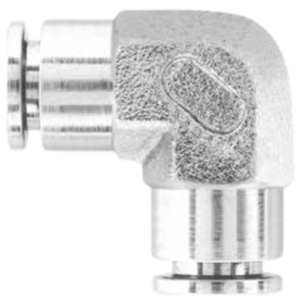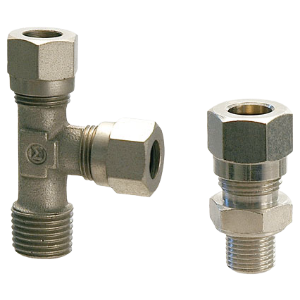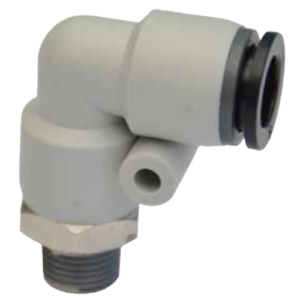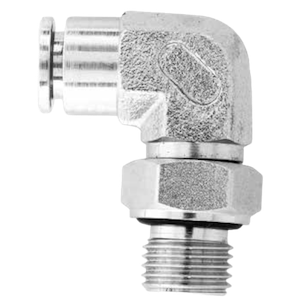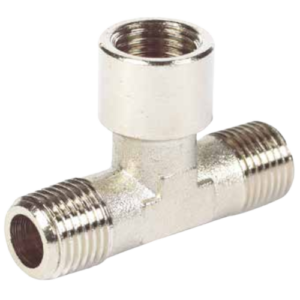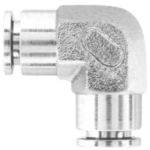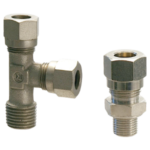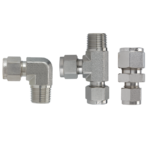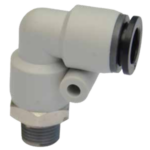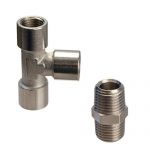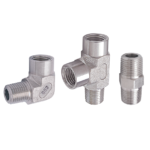Pneumatic Tube Fittings Ensure Safe & Secure Connections
Pneumatic tube fittings are specialised connectors designed to join tubes, pipes, and hoses in pneumatic systems. These systems rely on compressed air or gas to transmit power and control various components, such as valves, actuators, and cylinders. Fittings come in a wide range of shapes, sizes, and materials, each designed to suit specific applications and working conditions.
The primary purpose of pneumatic fittings is to create secure, leak-free connections between different parts of your system. They ensure that the compressed air or gas flows smoothly and efficiently, without any pressure losses or contamination. Fittings also allow for easy assembly and disassembly of pneumatic components, making maintenance and repairs much easier.
In addition to their practical benefits, pneumatic tube fittings also play a crucial role in the safety and reliability of your automation equipment. Poorly designed or low-quality fittings can lead to sudden disconnections, causing air leaks or even projectile hazards. By investing in high-grade fittings, you can minimise these risks and ensure that your pneumatic system operates safely and efficiently.
Materials Used in Pneumatic Tube Fittings
The choice of material for pneumatic tube fittings is crucial, as it directly impacts their performance, durability, and compatibility with the media being transported. Different materials offer distinct properties and advantages, making them suitable for various application environments.
Here are some commonly used materials in pneumatic tube fittings:
Brass
Brass is a popular material for pneumatic tube fittings due to its excellent durability, corrosion resistance, and cost-effectiveness. It offers good mechanical strength and is suitable for general-purpose applications.
Brass fittings are often used in compressed air systems, pneumatic control circuits, and industrial automation setups.
Stainless Steel
When it comes to demanding applications that require superior corrosion resistance and strength, stainless steel fittings are the go-to choice. They are ideal for harsh environments, such as those found in chemical processing, food and beverage industries, and marine applications.
Stainless steel fittings offer excellent resistance to chemicals, high temperatures, and pressure, ensuring long-lasting performance and reliability.
Plastic
Plastic fittings, such as those made from polyurethane, nylon, or POM (polyoxymethylene), offer a lightweight and cost-effective solution for low-pressure applications. They are resistant to certain chemicals and provide good electrical insulation properties.
Plastic fittings are commonly used in pneumatic automation systems, packaging equipment, and medical devices.
Aluminium
Aluminium fittings combine the benefits of lightweight construction and corrosion resistance. They are a popular choice for applications where weight reduction is crucial, such as in aerospace and transportation industries.
Aluminium fittings offer good strength-to-weight ratio and are resistant to oxidation, making them suitable for a wide range of pneumatic applications.
When selecting the material for your pneumatic tube fittings, consider factors such as compatibility with the media being transported, the operating temperature and pressure range, the required chemical resistance, and the overall cost-effectiveness. By choosing the right material, you can ensure optimal performance, longevity, and reliability of your pneumatic system.
The Pneumatic Tube Fittings We Offer at MasterMac2000
At MasterMac2000, we pride ourselves on offering a comprehensive range of high-quality pneumatic tube fittings to meet the diverse needs of our customers. Here are some of the key categories in our fitting lineup:
Univer's pneumatic fittings with functions consist of an elbow and intermediate flow regulator, slide valves, quick exhaust valves, and miniature ball valves. With a technopolymer-made body, these fittings can be used in various pneumatic circuits, providing reliable performance and precise control.
Univer's olive brass compression fittings are commonly used in pneumatic circuits, and their body is made with nickel-plated brass. These fittings are compatible with tubes made from copper alloy, brass, stainless steel, and plastic, offering versatile connection options for your pneumatic system.
TecnAir twin ferrule stainless steel fittings undergo rigorous testing and are manufactured to the highest quality standards, making them ideal for use in aggressive environments or in connection with corrosive fluids.
These fittings are interchangeable with products from leading manufacturers such as Parker (A-Lok™), Hamlet (Let-Lok™), Hoke (Gyrolok™), and Swagelok™, ensuring compatibility with your existing pneumatic system components.
Univer's push-in fittings come in two different series: one in technopolymer and the other in metal. The plastic version features a cylindrical thread with an O-ring and conical Teflon pre-treatment body and release ring, while the metal version has a cylindrical thread with an O-ring body and release ring. Both series offer secure, leak-free connections for your pneumatic tubing.
TecnAir's plastic push-in fittings are available in metric and imperial sizes, offering a vast range of options for your pneumatic system. These fittings provide high flow rates, secure locking, and compliance with RoHS and PED standards. They are compatible with tubes made from polyurethane, nylon (PA6), Rilsan (PA11/12), and Teflon, ensuring versatility in your pneumatic applications.
TecnAir's metal push-in fittings, made from nickel-plated brass, offer full flow in accordance with the internal diameter of the selected tube. The double clamping security locking ring eliminates the risk of accidental tube disconnection, while the internal support ring minimises air leakage by maintaining the sealing position at all times. These fittings comply with ISO 14743, RoHS, and PED standards, ensuring quality and reliability.
Univer's push-on fittings, made with nickel-plated brass, are commonly used in pneumatic circuits. These fittings provide a simple and secure connection for your pneumatic tubing, ensuring reliable performance in your automation applications.
Univer's standard pneumatic fittings, made from nickel-plated brass, aluminium, and zinc-plated steel, are used in various fields, including pneumatic circuits, low-pressure oleodynamic and hydraulic circuits, and vacuum applications. These fittings offer a cost-effective solution for your basic pneumatic connection needs.
TecnAir's high-pressure series of machined stainless steel pipe fittings are precision-engineered to ensure zero leakage under the most demanding high-pressure applications up to 200 bar. These fittings are available in sizes from 1/8 to 1/4 and are made from high-quality materials such as ASTM A-479, BS970 316-S31, and DIN 4401.
With their full bore design and electro-polished surface treatment, these fittings provide excellent performance and corrosion resistance in challenging environments.
No matter what your pneumatic tube fitting requirements are, MasterMac2000 has you covered. With our extensive product range and commitment to quality, you can trust us to provide the perfect fittings for your automation needs.
Choosing the Right Pneumatic Tube Fittings
With the wide variety of pneumatic tube fittings available in the market, selecting the right ones for your specific application can be a daunting task. However, by considering a few key factors, you can make an informed decision and ensure optimal performance and reliability of your pneumatic system.
Compatibility
One of the most critical aspects to consider when choosing pneumatic tube fittings is their compatibility with the tubes, hoses, and other components in your system. Ensure that the fittings you select have the correct size, thread type, and material compatibility to avoid leaks, misalignments, or system failures. Always refer to the manufacturer's specifications and guidelines to ensure proper compatibility.
Pressure Rating
Pneumatic systems operate at various pressure levels, and it's crucial to choose fittings that can withstand the maximum operating pressure of your system. Each fitting has a specific pressure rating, which indicates the maximum pressure it can handle without leaks or failures. Make sure to select fittings with a pressure rating that meets or exceeds your system's requirements to ensure safe and reliable operation.
Temperature Range
Consider the temperature range of your application when selecting pneumatic tube fittings. Different materials have varying temperature tolerances, and it's essential to choose fittings that can operate effectively within the expected temperature range. For example, if your application involves high temperatures, you may need to opt for stainless steel or high-temperature plastic fittings instead of standard brass or nylon options.
Chemical Resistance
If your pneumatic system is exposed to chemicals or corrosive environments, it's crucial to select fittings that offer adequate chemical resistance. Different materials have varying levels of resistance to specific chemicals, so it's important to consult the manufacturer's chemical compatibility charts or seek expert advice to ensure the fittings can withstand the chemicals present in your application.
Flow Requirements
The flow rate and pressure drop are important considerations when selecting pneumatic tube fittings. Choose fittings that provide the necessary flow rate and minimise pressure drop to optimise system performance and efficiency. Factors such as the fitting's internal diameter, shape, and surface finish can impact the flow characteristics, so it's essential to consider these aspects when making your selection.
Ease of Installation and Maintenance
Consider the ease of installation and maintenance when choosing pneumatic tube fittings. Some fittings, such as push-in types, offer quick and tool-free installation, making them ideal for applications that require frequent tube changes or maintenance.
Other fittings, like compression types, may require specific tools and procedures for proper installation and maintenance. Select fittings that align with your installation and maintenance requirements to ensure efficient and hassle-free operations.
Installing and Maintaining Pneumatic Tube Fittings for Optimal Performance
Proper installation and maintenance of your pneumatic tube fittings are essential for ensuring their long-term performance and reliability. Here are some tips to help you get the most out of your fittings:
1. Follow the manufacturer's instructions - Always refer to the installation guidelines provided by the manufacturer, as different types of fittings may require specific techniques or tools.
2. Use the correct tools - Using the right tools, such as tube cutters and deburring tools, can help you achieve a clean, square cut on your tubing, which is essential for creating a leak-free connection. Avoid using pliers or other makeshift tools that can damage the fitting or tube.
3. Inspect fittings regularly - Periodically inspect your pneumatic fittings for signs of wear, damage, or leaks. Check for cracks, corrosion, or other visible defects, and replace any damaged fittings immediately to prevent system failures.
4. Keep fittings clean - Dirt, debris, and other contaminants can accumulate on your fittings over time, affecting their performance and sealing ability. Regularly clean your fittings using compressed air or a soft brush to remove any buildup.
5. Store fittings properly - When not in use, store your pneumatic fittings in a clean, dry place away from direct sunlight and extreme temperatures. This will help prevent damage and ensure that your fittings are ready for use when needed.
By following these simple installation and maintenance tips, you can ensure that your pneumatic tube fittings provide reliable, long-lasting performance in your automation system.
Troubleshooting Common Issues With Pneumatic Fittings
Even with high-quality pneumatic tube fittings, issues can sometimes arise. Here are the three most common problems and their solutions:
- Leaks - If you notice air leaks around your fittings, check for proper installation, tighten connections, and replace any damaged or worn seals or O-rings.
- Poor air flow - Restricted air flow can be caused by blocked or kinked tubes, undersized fittings, or contaminated air. Inspect your tubes and fittings, and consider upgrading to larger sizes if necessary. Ensure your compressed air is clean and dry.
- Difficulty connecting tubes - If you're having trouble inserting tubes into your fittings, make sure the tube ends are cut cleanly and squarely. Lubricate the tube ends with a small amount of pneumatic oil to ease insertion.

